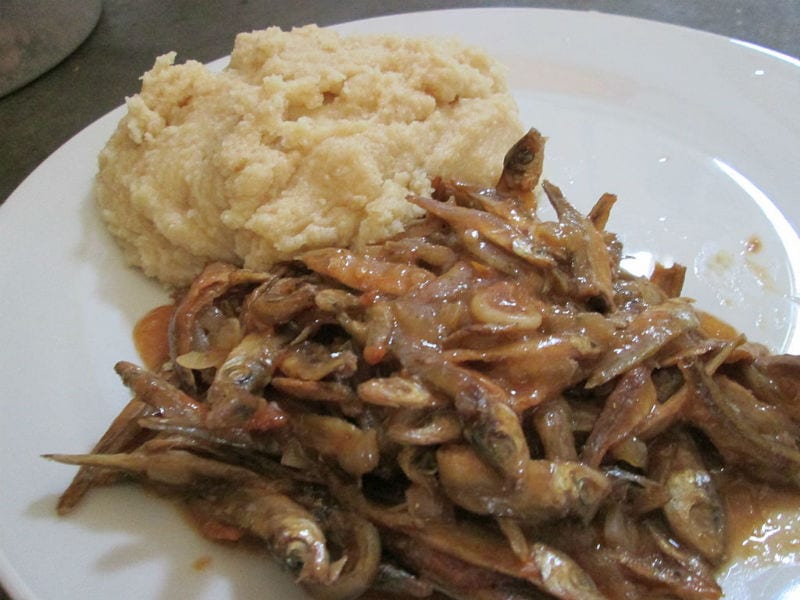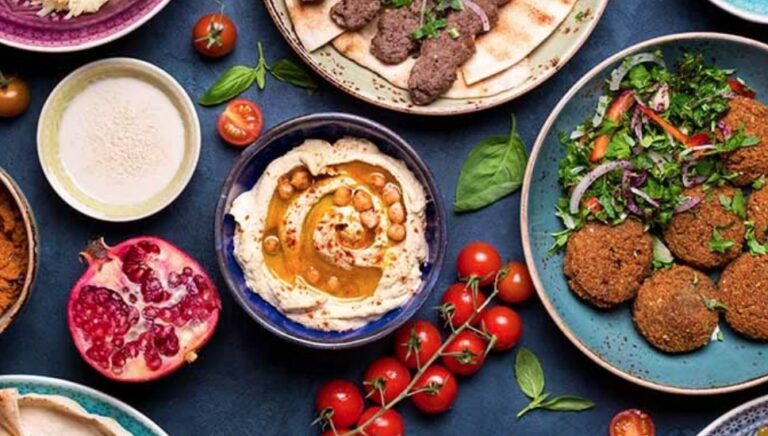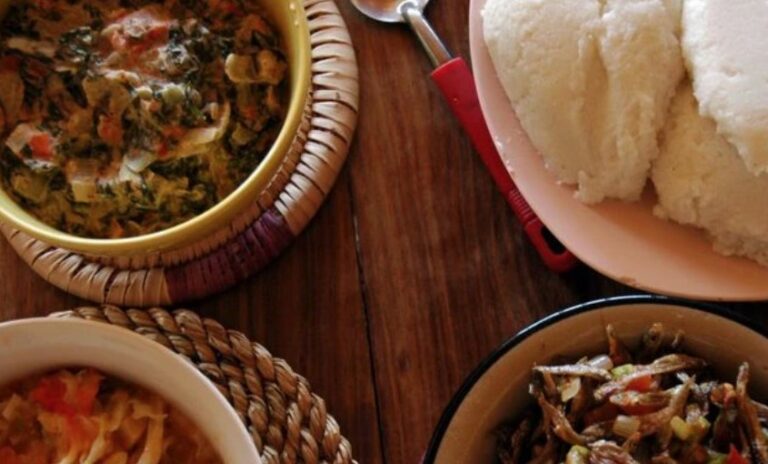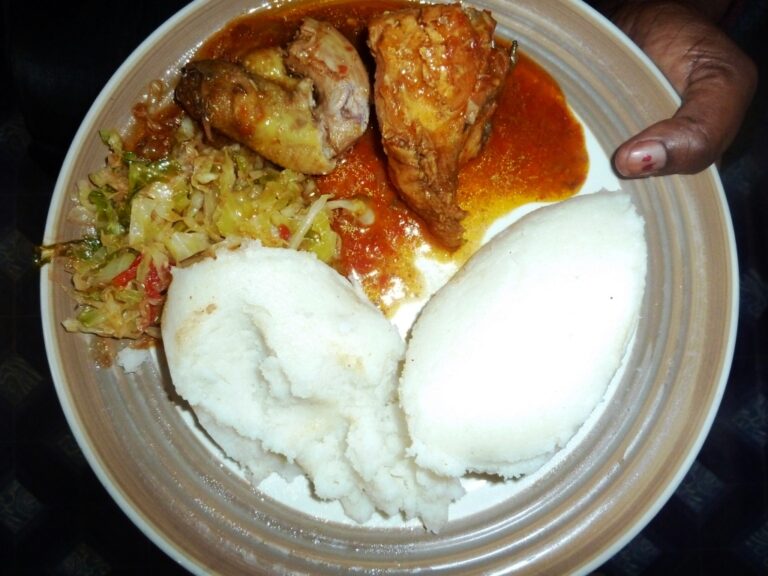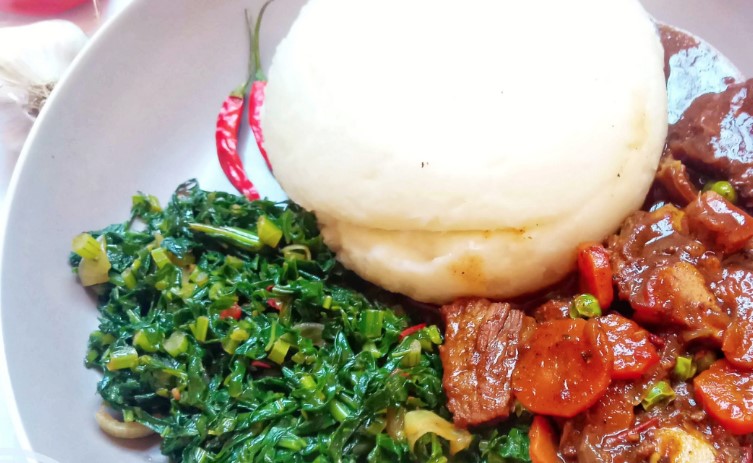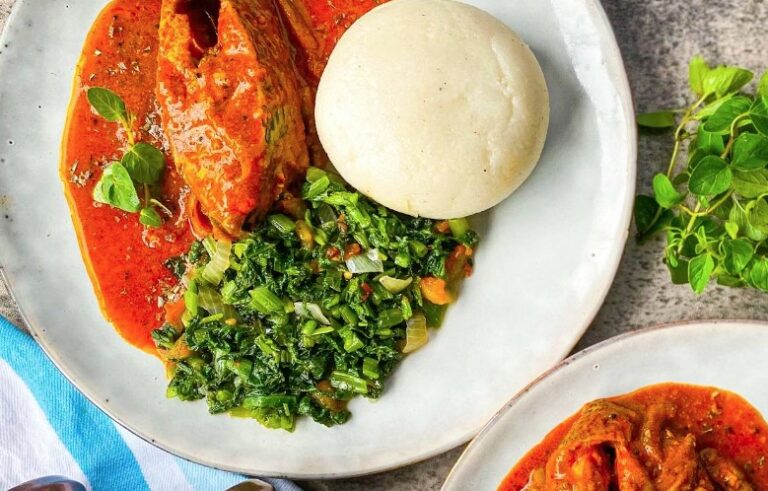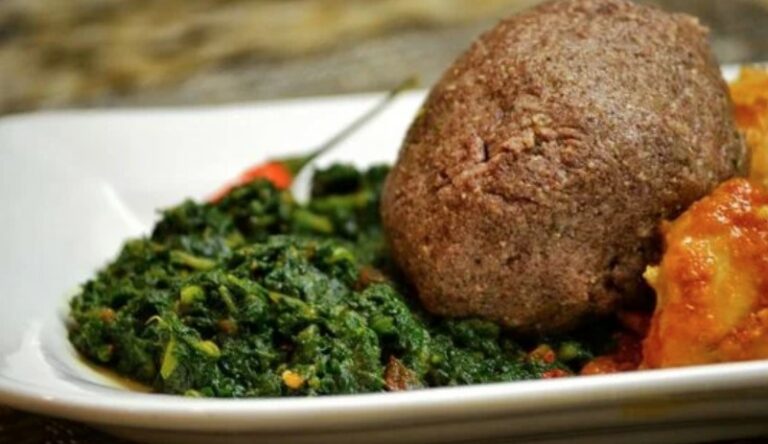Introduction: Zimbabwean Cuisine Overview
Zimbabwean cuisine is diverse and heavily influenced by the country’s history and geography. It is a fusion of traditional African ingredients and cooking techniques with British and Portuguese colonial influences. The cuisine features a variety of stews, soups, and curries made with maize meal, beans, sweet potatoes, peanuts, meat, and vegetables. The traditional Zimbabwean cuisine is known for its rich and spicy flavors, and it is often served with sadza, a thick porridge made from maize meal.
Traditional Zimbabwean Cuisine and Vegetarianism
Traditional Zimbabwean cuisine typically includes meat, and there are limited vegetarian options. However, there are some plant-based dishes in Zimbabwean cuisine such as nyimo, a stew made with cowpeas, pumpkin leaves, and peanut butter. Other vegetarian dishes include muboora, a pumpkin leaf stew, and dovi, a peanut butter stew made with vegetables like eggplant and okra. These dishes are typically served with sadza or other grains like rice or millet.
Vegan and Vegetarian Adaptations of Zimbabwean Dishes
Some traditional Zimbabwean dishes can be adapted to be vegan or vegetarian by replacing meat with plant-based proteins like tofu, seitan, or tempeh. For example, instead of using meat in a stew, one can use tofu or seitan and add a variety of vegetables like carrots, onions, and sweet potatoes. Similarly, sadza can be made with alternative grains like quinoa, sorghum, or cassava to make it gluten-free and vegan-friendly.
Plant-Based Staples in Zimbabwean Cuisine
There are several plant-based staples in Zimbabwean cuisine that are suitable for vegan and vegetarian diets. One such staple is muriwo unedovi, a dish made with spinach and peanut butter. It is typically served with sadza or rice and can be made vegan by using plant-based butter or oil instead of ghee. Another staple is tsunga, also known as African kale, which is a leafy green vegetable that can be used in soups, stews, and salads.
Restaurants Offering Vegan and Vegetarian Options in Zimbabwe
Although Zimbabwean cuisine is traditionally meat-based, there are some restaurants in Zimbabwe that offer vegan and vegetarian options. For example, Nandos, a popular chain restaurant, offers a vegetarian burger and a vegetable wrap. Similarly, Pariah State, a restaurant in Harare, offers vegan and vegetarian options like vegan burgers, falafel, and tofu stir-fry. It is worth noting that the availability of vegan and vegetarian options in Zimbabwean restaurants is still limited, but it is slowly improving.
Conclusion: Accessibility and Future Possibilities for Plant-Based Eaters in Zimbabwe
While traditional Zimbabwean cuisine is heavily meat-based, there are some plant-based dishes that can be adapted to suit vegan and vegetarian diets. As the demand for plant-based options grows, more restaurants in Zimbabwe are starting to offer vegan and vegetarian options. However, accessibility remains a challenge, especially in rural areas where traditional cuisine is still the norm. Nonetheless, with time, it is possible that Zimbabwean cuisine will become more inclusive and offer a wider range of plant-based options for all to enjoy.

